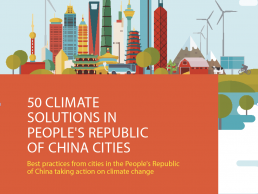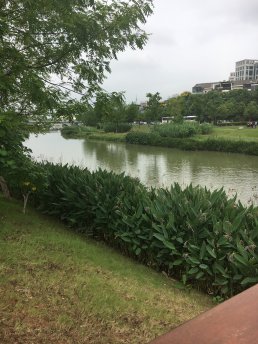First appeared in

Asian Development Bank
50 climate solutions from cities in the People's Republic of China
Restoring the extensive river system in Changde increased resilience against future extreme weather events. The ecological adaption project also incorporates new recreational areas and green walkways to the benefit of local residents.
Changde has reclaimed its identity as a river city by restoring the river system that covers more than 17% of the city. Over time as the city was built up, many of
the tributaries were segmented and built over, leaving the city vulnerable to flash flooding. A comprehensive project tackles these direct problems through ecological restoration as well as improving aspects of the river-side life. With a CNY5.5 billion investment, the city has reconnected the tributaries and together with other initiatives, including urban dwelling renewal with ecological stream rehabilitation, improved the drainage capacities to make the city more resilient to climate change.
700
TONS OF CO2 ARE SEQUESTERED ANNUALLY BY GREENING THECITY.
The development also includes 24 recreational sites, 2 large plazas, 7 sports grounds, and a natural swimming pool, covering a total of 69 ha of green space. The mobility of the citizens was also improved with 22 new pedestrian bridges and green walkways, as well as the reconnected tributaries, which made it possible to use the river as waterway passenger transport. Part of the ‘Sponge City’ initiative, the project has combined engineering and natural ecosystem service provision to achieve an innovative climate mitigation and adaptation solution.

Changde has climate-proofed the city through integrated eco-logical engineering.
The Challenge
Characterized by many rivers and wetlands, Changde is particularly vulnerable to extreme rainfall. By re-creating the natural wetland eco-system, the city is now more prepared for extreme events and has improved the quality of life for the citizens.
Co-Benefits
Economic A more resilient city will reduce emergency expenses and recovery costs associated with landslides and floods, such as infrastructure damage and loss of livelihood.
Environment The use of wetland and other green infrastructure creates benefits of increased biodiversity, improved air quality and reduced urban heat effects in the city.
Health The improvements will all lead to an increasingly active population,
through sports and improving the walkability of the city. The green spaces will also help to improve air quality which will reduce respiratory issues.

